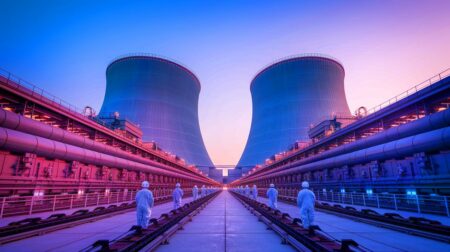The United States now experiences a $1 billion weather or climate disaster every three weeks, and a risk to one region affects other regions as well, as when wildfire smoke drifts long distances or food supply chains are disrupted by flooded agricultural land. The Fifth National Climate Assessment for the U.S., released Tuesday, details these effects of climate change but also the decisions that can lead to a more resilient nation.
“It makes clear that climate change is impacting all regions of our nation – but that communities are taking more action than ever to reduce climate risks,” said U.S. President Joe Biden. “We have to keep that action going.”
Ten chapters of the report each focus on a specific region, with an interactive tool available to explore local and regional climate threats and responses. The Northeast, for example, now sees the highest increase in rainfall amounts during intense downpours; the Pacific Northwest fisheries face losses, as do Hawaii and other island territories.
The Southwest has faced 22 years of historic drought affecting the Colorado River. “The federal governments of the United States and Mexico, the seven U.S. Colorado River basin states, and indigenous peoples are developing a range of adaptation pathways and solutions,” said a White House fact sheet on the report.
The new assessment adds climate change data and insights since the previous version was issued in 2018. There are positive trends, including a 12% decrease in emissions between 2005 and 2019, primarily due to a drop in coal use at power plants. The electricity sector saw a 40% drop as renewables are adopted, and transportation became the highest-emitting sector in 2017.
Climate action has increased across the U.S. too, with both adaptation and mitigation projects though emphasis remains on the latter. Yet that progress remains uneven. “Climate adaptation and mitigation efforts involve trade-offs, as climate actions that benefit some or even most people can result in burdens to others,” the report warns.
Climate expert Dr. Katharine Hayhoe, a chief scientist with The Nature Conservancy who has worked on four of the assessment reports, said the new edition makes clear that while climate change affects all people, it doesn’t affect them equally.
“From low-income neighborhoods in urban centers to indigenous peoples, those who are already marginalized are often most vulnerable and/or exposed to climate impacts including heat and flood,” she said. “Climate action, both mitigation and adaptation, has increased in every region of the U.S. But it is not yet enough. Much more is needed, and these solutions must be solutions for justice and equity.”
Emissions aren’t falling fast enough to meet U.S. national and international climate commitments. On average, greenhouse gas emissions would need to decline by more than 6% per year in order to reach net-zero by 2050. In reality, they’ve dropped by less than 1% per year between 2005 and 2019.
The U.S. is warming faster than the global average, the report said, making climate action all the more urgent. A more rapid shift to renewables can help but more will be needed, including improved urban planning, land use strategies like reforestation, and carbon capture and storage technologies.
“Most U.S. net-zero scenarios require CO2 removal from the atmosphere to balance residual emissions, particularly from sectors where decarbonization is difficult,” the report said. “In these scenarios, nuclear and hydropower capacity are maintained but not greatly expanded; natural gas–fired generation declines, but more slowly if coupled with carbon capture and storage.”
Did you like it? 4.3/5 (21)








